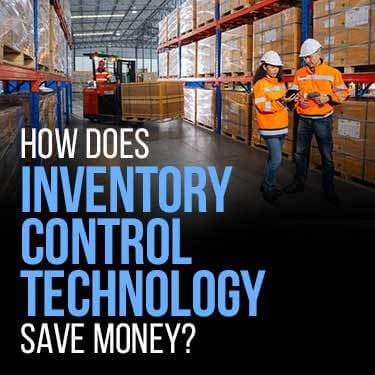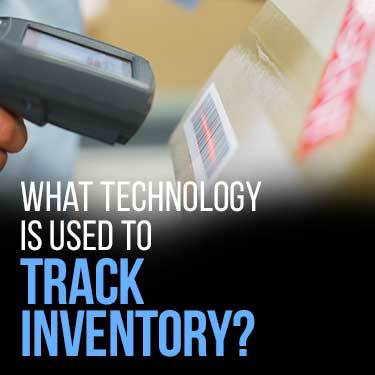 Copy URL to Clipboard
Copy URL to Clipboard
Inventory tracking technology has grown more efficient as fulfillment services and distribution centers look for ways to provide better customer service. As the cost of even basic commodities continues to rise, data from tracking technology can also help businesses streamline their product lines and save money.
The U.S. Securities and Exchange Commission (SEC) does require some public companies to report their inventory, and tracking technology helps with accurate reporting. The most common benefit of inventory tracking technology is as a cost management tool for warehouses and business to make sure inventory isn’t going to waste.
Fulfillment and Distribution has been on the cutting edge of inventory tracking technology to ensure the best and most efficient methods are available to clients. We’ll review why this technology is crucial and how your business can benefit.
Table of Contents
Whether your business exists as brick-and-mortar or you’re running on an eCommerce platform, you need to keep track of what’s happening with your products.
Inventory tracking technology is necessary to track what you have in stock so you know what you need to sell.
No matter where you store your inventory, there needs to be a way to accomplish the following tasks:
A variety of inventory management systems exist that are designed to manage these items. However, such systems can't accomplish much without the right supporting technology.
What happens if inaccuracies start to creep in? Poor order fulfillment tracking could lead to overselling a product. A reordering system is only going to be as good as the data. Late orders mean longer wait times for customers – wait times that could lead to those customers going somewhere else with their money.
Not only are you losing the sale in this case, but you are also stuck with the additional inventory. If the problem continues, your business reputation is going to suffer. No matter how good your products are – if you can’t keep customers happy, they’ll find someone who will.
Publicly traded companies that need to report their inventories to the SEC use inventory management technology for its accuracy.
A bad report to the SEC can lead to:
If the goal is to expand your company and go public, then you need to provide evidence that it’s well managed. Investors want to know that their money is working for them.

Using technology to manage inventory minimizes issues that pop up because of human error. It can also prevent business owners from making emotionally-based decisions when it comes to inventory ordering.
A major side effect of the recent global pandemic was a disruption to the global supply chain. Product shortages have led to mass supply ordering when supplies are available out of fear that they won’t be available in the future. However, most supply chain advisors will tell you that most businesses end up suffering from too much inventory rather than too little.
Inventory control technology saves you money by providing accurate data on product movement which leads to more efficient ordering systems.
Optimized inventory levels result in lower carrying costs. You aren’t ordering what you can’t sell and you aren’t paying for warehouse space that isn’t producing money.
Inventory management software accomplishes this in a few different ways:
Saving money and cutting costs in a rough economy is done by leveraging small details that result in big changes. Each method we’ve outlined is meant to ultimately streamline your inventory control methods and save you money in the long-term.
For more answers about how to budget your warehouse space, check out our article on how to plan a warehouse budget.
How will you know that you’ve optimized your inventory tracking methods successfully? You can measure your company’s data against the 80/20 inventory rule.
Following the 80/20 rule means that your business is generating 80% of its profit from only 20% of its inventory.
These numbers are based on the Pareto Principle of management consulting. In simple terms, you want to find out which of your products bring in the most profit. Inventory tracking technology helps you identify those 20% of products so that you can make sure they are always in stock.
Ultimately, you should be able to sort your inventory into three categories:
The point here is that the product has to sell. A product that doesn’t sell quickly, but that does bring in significant value each time is still worth keeping.
Using this system will also help you phase out products that aren’t selling. In such cases, hoarding the merchandise just in case it becomes popular again is a bad idea. Odds are, you’ll spend more long term in warehousing costs than what you might be able to recover in sales later.
Instead, reduce the amount you carry or offer it at a discounted price until you run out and can discontinue the product. If the demand forecast starts to look up again after a time, test it out with a small order and progress from there.

Tracking inventory at such a precise level requires the right technology. Paper logs and file cabinets just don’t cut it anymore, and lend themselves to human errors that can cost the company millions. Even things like electronic spreadsheets have serious weaknesses.
Advances in inventory tracking include the use of:
Both barcodes and RFIDs require an IMS to keep things in order. A quality IMS is an investment in your business and shouldn’t be taken lightly if you really want to manage your own inventory processes.
Whether you’re starting from scratch or looking to overhaul a current system, weigh the pros and cons of the technology available. Barcode systems are relatively inexpensive and can be very accurate, but require individual scanning and can slow down a large operation.
RFID systems are a larger upfront investment and often require the use of an IMS tailored to that specific technology. However, the speed and accuracy of processing is greatly increased.
| Common Equipment | Price Range* |
| RFID Tags and Labels | $1 – 10 |
| Fixed Reader Systems | $2,000 – $2,500 |
| Handheld Readers and Chargers | $1,500 – $4,000 |
| Printer Encoders | $2,000 – $4,500 |
| Software | $20,000 – $150,000 |
Depending on how expansive you want the system to be, you could easily spend over $200,000 up front just to get an RFID system off the ground.
Of course, you do have a third option: outsource your inventory to a 3PL warehouse that handles inventory and tracking on your behalf. You and your customers benefit from high quality tracking technology while avoiding the steep costs of running such a program independently.
Whether you choose to benefit from the services of a 3PL or invest in your own warehouse management system, effective inventory control is about the details.
The bigger the company, the more those details matter and the more it stands to lose financially. For example, a company that has to keep raw materials on hand needs a system that can track internal use of supplies easily.
There are two commonly-used models of inventory control:
Working with an experienced 3PL already vested in perpetual inventory control methods will give you the best overview of product sales performance from both a short and long-term view. Having this knowledge will also help you decide which inventory control technique to focus on.
Inventory control techniques are how you choose to organize your inbound and outbound logistics. If you are operating in a state that charges inventory tax, it’s important to select techniques that can help you save money and remain on the right side of the tax system.
Speak to your warehouse manager or 3PL about the following tools:
Inventory tracking technology has made life much easier for companies wanting to keep an eye on their bottom line. Considering how much capital the average business has wrapped up in inventory, losing track of it means losing money.
Supply chain managers and logistics experts at Fulfillment and Distribution have managed economic highs and lows for decades. Our warehouses have led the way in inventory tracking technology as part of our company’s drive to always provide the best for our customers.
Avoid the headache while making sure your money is going towards growing your business. Let Fulfillment and Distribution handle your inventory and provide you with access to state-of-the-art technology.
We can help with:
Call us today at (866) 989-3082 to speak with a fulfillment specialist. Looking for immediate numbers. Fill out a risk-free online quote request now.
